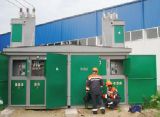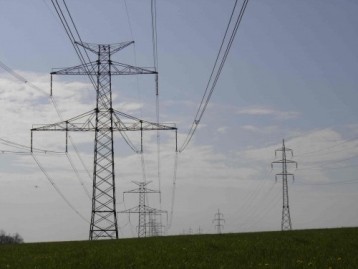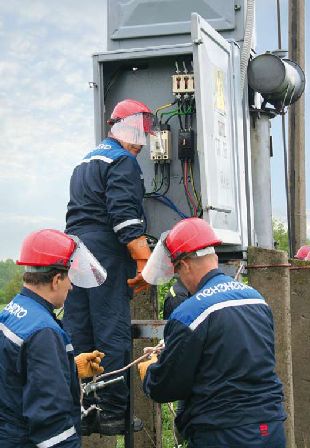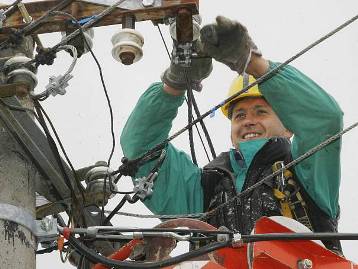Organization of the operation of electrical distribution networks
 The main structural unit engaged in the operation of electric networks is the electric network enterprise (PES), which performs work on the reconstruction and construction of new substations and lines, as well as repair and maintenance of existing facilities.
The main structural unit engaged in the operation of electric networks is the electric network enterprise (PES), which performs work on the reconstruction and construction of new substations and lines, as well as repair and maintenance of existing facilities.
Operational activities include: revision and inspection of equipment, maintenance and repair.
All work on the maintenance and repair of electrical networks is carried out in accordance with the current system for planned prevention. For this purpose, long-term, annual and monthly plans are drawn up.
The electric network enterprise serves 8-16 thousand conventional blocks in a radius of 70-100 km (for one conventional block during the operation of the electric networks, labor costs are incurred for maintaining one kilometer of 110 kV overhead power line on metal or reinforced concrete supports).
The Electric Networks Enterprise includes the following divisions: Electric Network Regions (REGs), Services and Departments.

Electricity grid regions (REGs) are part of the PES and are usually created within the boundaries of an administrative region. RES has the necessary rights and capabilities to solve current problems with electricity supply to consumers and develop long-term plans on a regional scale.
The volume of networks operated by RES is from 2 to 9 thousand conventional units. RES personnel are engaged in servicing 0.38, 10 kV power lines and 10 / 0.4 kV transformer substations, and in some cases 35, 110 kV lines and transformer substations with higher voltage steps.
See also the article: Balance ownership of power grids
The area of electrical networks performs the following works:
-
maintenance, repair and reconstruction of electrical networks;
-
operational dispatch control of networks;
-
elimination of violations in the operation of electrical installations;
-
planning of electrical network maintenance works;
-
increase in reliability, modernization of electrical installations;
-
improving consumer power schemes;
-
conducting explanatory work on the rational and economical use of electrical energy, protection of electrical networks, etc.
The production functions of the electricity supply organization (RES) are:
-
when supplying electricity to consumers within the limits of the annual, quarterly and monthly plans (limits) in the approved manner;
-
technical operation of electrical installations in their balance;
-
control over the correct consumption of electricity;
-
construction, overhaul and reconstruction of networks.
Along with the main function of high-quality and uninterrupted power supply to agricultural consumers, the power grid enterprises provide organizational and technical assistance to the electrical services of the enterprises in the operation of electrical equipment, in the training and upgrading of the qualifications of personnel, explaining the safety measures and rules for use of electricity among the population.

PES service — a specialized unit that centrally performs production functions (for example, substation service — operation and operational maintenance of transformer substations 35 kV and above).
PES department — a subdivision performing certain functions of the enterprise's management (for example, financial department, personnel department, etc.).
The operational sections are organized as part of RES. The number and structural composition of the sections depend on the volume of work, the configuration and density of the network, road conditions and other operational factors. Typically, the site is designed to serve up to 1.5 thousand conventional units within a radius of up to 30 km.
In repair and production bases, there are mechanized repair stations that perform overhead line maintenance and repair activities. For this, the stations are equipped with special linear machines, mechanisms and vehicles in accordance with existing standards. Machines and mechanisms are assigned to the electrical network enterprise, its districts and even districts.
Maintenance of electrical networks is carried out by permanent staff on duty, operational field teams, domestic staff, electricians of operational units.
In transformer substations 330 kV and higher or designated as base stations, personnel are constantly on duty who carry out operational management of the other substations.

Operational field brigades are the main form of maintenance of electrical networks. This requires less staff. The teams serve the designated transformer substations up to 110 kV, distribution networks 0.38 — 20 kV according to a previously developed schedule, requests and in emergency situations.
The operational field brigade includes 2-3 people (on-duty electrician or technician and driver with electrician qualification). One team supports up to 400 km of lines with a voltage of up to 20 kV and up to 50 network transformer substations. All operational vehicles are equipped with car radios that ensure reliable communication with RES and their dispatchers.
In order to increase the efficiency of the management of power transmission networks of individual transformer substations with voltages of 35 and 110 kV, monitoring at home is organized. A residential building is being built near the substation for the staff on duty, which is equipped with alarm signals for violations in the substation. The duration of duty at home usually lasts one day.
In a number of power systems, the electricians of the electrical services of the agricultural enterprises have the right to eliminate malfunctions in HV 0.38 kV on the territory of the economy. To do this, they have a key to the low voltage switchboard of the transformer substation and can make the appropriate switching. Such a system helps reduce breakdown time.
Automated control systems are widely used in organizing the work of networks that solve a set of issues of organizational, economic and operational dispatch control… The main tasks of such systems are planning, accounting and management of repair and operational maintenance of networks, evaluation of the quality of work at all levels of management, operational monitoring of the state of networks.
